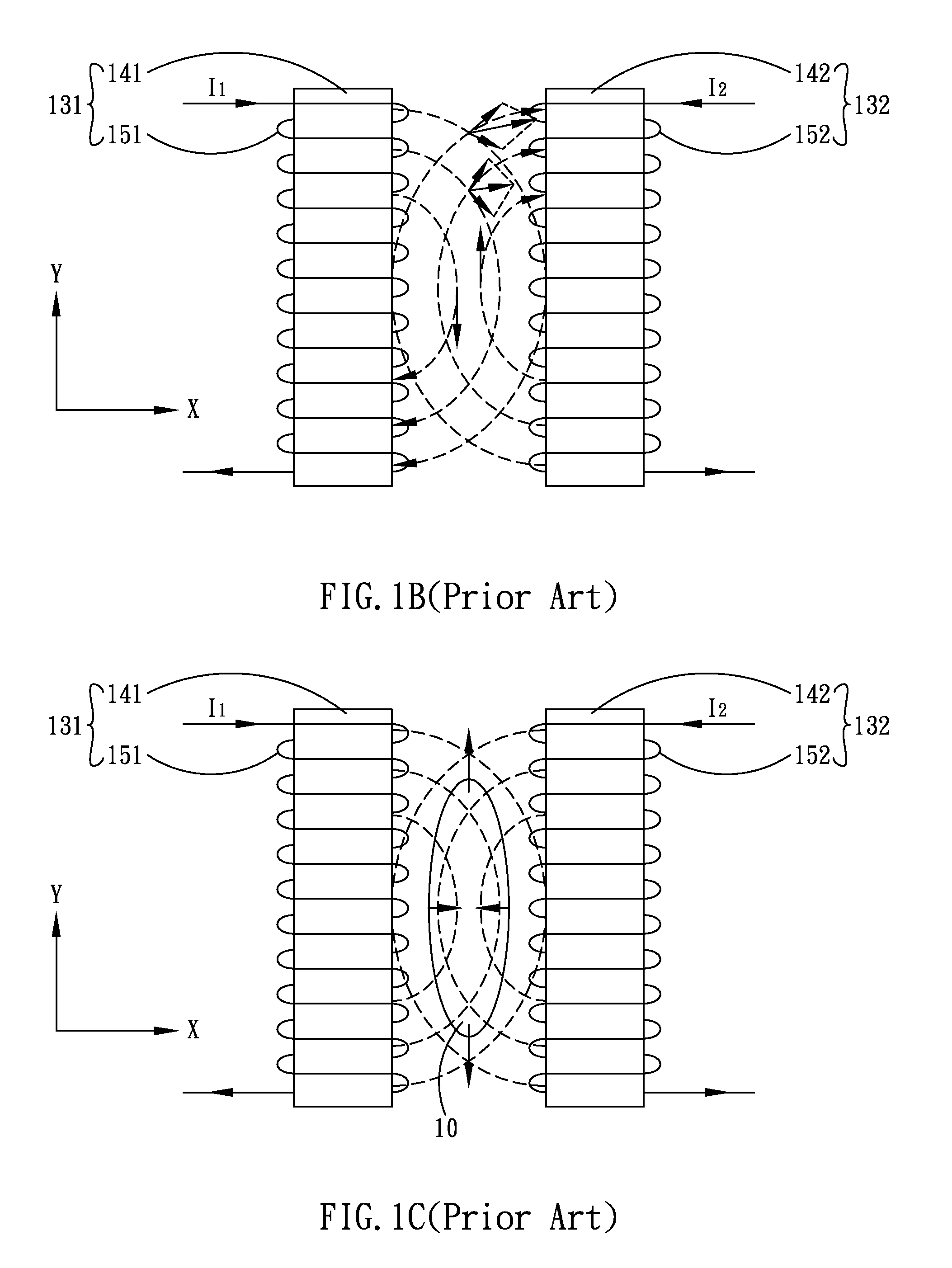Ion implanter and method for adjusting ion beam
a technology of ion beam and ion beam, which is applied in the field of ion beam implantation, can solve the problems of difficult implementation of technology, high cost, and inability to achieve perfect cross-sectional and achieve the effect of effective and economical adjusting the shape of ion beam
- Summary
- Abstract
- Description
- Claims
- Application Information
AI Technical Summary
Benefits of technology
Problems solved by technology
Method used
Image
Examples
first embodiment
[0038]FIG. 2B shows the first set of bar magnets 230 shown in FIG. 2A. The first continuous loop of winding coils 261 includes a plurality of sections 2611-2613, wherein at least two different ones of the sections 2611-2613 have a different density of coils or coil density (turns / mm). That is, the coil density is the number of coils per unit length. Besides, the second continuous loop of winding coils 262 also includes a plurality of sections 2621-2623, wherein at least two different ones of the sections 2621-2623 have different coil density (turns / mm). Herein, the first continuous loop of winding coils 261 and the second continuous loop of winding coils 262 are non-uniformly distributed along the first support rod 251 and the second support rod 252 respectively.
[0039]In this embodiment, the distribution of the first continuous loop of winding coils 261 along the first support rod 251 is essentially similar to (e.g., about the same as) the distribution of the second continuous loop ...
second embodiment
[0041]FIG. 2C shows the first set of bar magnets 230 shown in FIG. 2A. The first continuous loop of winding coils 261 includes a plurality of sections 2611-2613, wherein at least two different ones of the sections 2611-2613 have different inductor coefficients, such as can be achieved from fabrication thereof from different materials. Moreover, the second continuous loop of winding coils 262 can also include a plurality of sections 2621-2623, wherein at least two different ones of the sections 2621-2623 have different inductor coefficients, such as by construction from different materials.
[0042]Again, the first set of bar magnets 230 can have only one continuous loop of winding coils being made of a different material with the other continuous loops of winding coils being made of the same material. Herein, different inductor coefficients will change power through the coils thereby slightly changing the diameters (e.g., via expansion) of the coils, such that a non-uniform magnetic fi...
third embodiment
[0043]FIG. 2D shows the first set of bar magnets 230 shown in FIG. 2A. The second support rod 252 is not straight and includes a plurality of sections 2521-2522, wherein at least two different ones of the sections 2521-2522 have different directions. Of course, the first support rod 251 also can be non-straight.
[0044]Clearly, when the distance between two support rods 251 / 252, or the distance between two continuous loops of winding coils 261 / 262, is varied along the direction of any support rod 251 / 252, the magnetic field distributed between the two support rods 252 / 252 will have multi-stages whereby the shape of the ion beam 10 will then be correspondingly adjusted.
PUM
 Login to View More
Login to View More Abstract
Description
Claims
Application Information
 Login to View More
Login to View More - R&D
- Intellectual Property
- Life Sciences
- Materials
- Tech Scout
- Unparalleled Data Quality
- Higher Quality Content
- 60% Fewer Hallucinations
Browse by: Latest US Patents, China's latest patents, Technical Efficacy Thesaurus, Application Domain, Technology Topic, Popular Technical Reports.
© 2025 PatSnap. All rights reserved.Legal|Privacy policy|Modern Slavery Act Transparency Statement|Sitemap|About US| Contact US: help@patsnap.com



